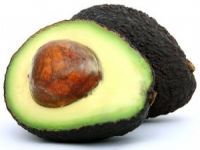Avocado
By João Beles*

 The benefits of the fruits and leaves of this therapeutic tree: this tree, native to Central America, is now grown all over the world.
The benefits of the fruits and leaves of this therapeutic tree: this tree, native to Central America, is now grown all over the world.
All parts except the root, have a therapeutic effect.
In in vitro studies, the vegetable totum of the avocado (all of the constituent phytochemicals) inhibits growth and stimulates apoptosis of tumor cells, the Seminar in Cancer Biology concluded in 2007.
Several studies conducted during the 90s confirmed the efficacy of avocado in lowering cholesterol, triglycerides and glucose. According to a 2002 study published in the Journal of Cosmetic Science, externally applied, avocado decreases inflammation caused by UVB rays.
Active principles
The leaf and bark contain volatile oil, flavonoids, tannins with astringent and anti-diarrheal action. The fruit contains phytosterols with cholesterol reducing action, essential fatty acids, proteins (25%), saponins, with regenerative action on cartilage and vitamins A, B1 and B2.
Main properties
The fruit is indicated for the treatment of cholesterol. It is also used externally as a tranquilizer, healing the skin and stimulating hair growth. The leaves and bark stimulate menstruation, treat diarrhea and flatulence. It is also a traditional treatment for cysts in the kidneys, elevated uric acid and is used to fight coughs.
Other properties
An oil is extracted from its seed which can be applied on the hair to improve its strength and growth. The flesh of the fruit is good food for babies to begin solid foods.
Administration
Utilize the fruit, the pear avocado, leaves and bark. In fruit, it is utilized beaten as a filling. Rich in nutrients and healthy fats, it is considered a dietetic food, though very caloric. It is a good source of vitamins B1, B2, B3, B5, C, E and K.
Precautions
The leaves and bark cannot be used during pregnancy.
Home remedy for cholesterol treatment
Cut an avocado in half and remove the seed. Squeeze the juice of half a lemon into the the area where the seed was and store in the refrigerator overnight. The next day, fasting, eat the part of the pulp which was in contact with the juice with a spoon, and drink the juice. Add more lemon juice in the pulp thtat is left, and repeat daily until no pulp remains. At that time, do the same procedure on the other half. Measure your cholesterol after eating three pieces of pear avocado.
*Naturopathologist and professor at the Institute of Traditional Medicine of Lisbon
Translated from the Portuguese version by:
Lisa Karpova
Pravda.Ru
Subscribe to Pravda.Ru Telegram channel, Facebook, RSS!


